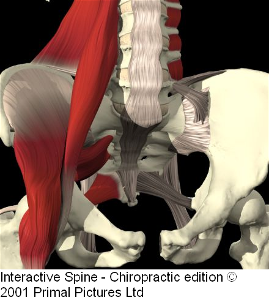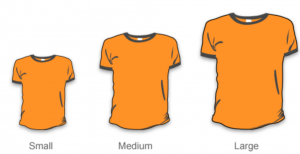This exercise is most associated with frying the quads for skiing and boot camps. But it can be a powerful corrective exercise for those with lower back pain. In this video, we provide 3 variations that each offer their own unique benefits and challenges to the body.
Posts Tagged ‘lower back pain’
Corrective Exercise Wall Sit
Wednesday, January 9th, 2019Corrective Exercise Ankle Squeezes Prone
Thursday, August 16th, 2018The Ankle Squeeze Prone is definitely one of our “go to” Level A exercises when it comes to addressing the posterior hip with the chronic pain client.
Proprioceptively, it can highlight left to right imbalances. Depending on the intention, this exercise is great for facilitating the posterior hip musculature or down regulating tone to those same muscles.
It’s also great for disassociating the lumbar musculature from the glutes/posterior hip by assisting in timing of the onset of contractions.
You will find this a great tool in your tool box for clients of all levels. The benefits to the chronic pain client is one of bio-psycho-social characteristics. But aren’t they all?
Leave your thoughts below on what you or your clients feel.
Stop Lower Back Tightness in 1:00 or Less
Monday, December 14th, 2015Shopping is one of the activities that we most frequently hear about regarding aggravating our clients’ lower backs. And what do we do during the holiday season? We shop.
The stopping and starting and stopping again. The standing around in long lines with no reprieve for our back muscles.
Couple that with the other stresses associated with the holidays and the factors that can ramp up lower back pain/tightness can get the best of us. So if you are looking for a quick and effective way to reduce tension in your lower back, you’ll want to watch this video.
Derahn shows you how to relax your lower back muscles WITHOUT stretching. It is counter intuitive for most people but it gets the job done because it goes with the tightness instead of away from it.
That’s the good news. It will relax the back muscles and for many people reduce or eliminate upper and lower back pain.
The bad news is that this is not a long term solution. It does not address the many, many bio-psycho-social factors associated with pain.
However, any time you can mitigate the discomfort, keep it from escalating and take control-you are doing something very positive for your long term success.
Try it!
Are Biomechanics Still Relevant for the Client in Pain?
Friday, May 29th, 2015This video shows a powerful sequence of 3 corrective exercises that we use at Function First that can positively effect lumbo-pelvic-hip function.
Here is the second installment of the “Understanding Pain” series
We hope you’re enjoying our Understanding Pain Series thus far.
Have you ever had a client in pain present no biomechanical “red flags”? What course of action did you take? How did you help them? Share you thoughts in the comment box at the bottom of the page.
Corrective Exercise Four Point Rotations
Friday, May 15th, 2015When we prescribe a corrective exercise to our client, there are multiple factors that go into the decision making process. For an exercise to be appropriate for a client at any given time, we have to consider the 4 characteristics of every exercise:
*biomechanical
*physiological
*neurological
*psychological
The Four Point Rotations is an exercise when looked at analytically, can successfully address these characteristics for many client types. This is an effective exercise to emphasize hip motion while unloading the spine and decreasing the threat for those with lower back pain.
Weak back and lower back pain
Thursday, December 11th, 2014The bio-psycho-social model to chronic pain is evidently clear in the literature and we have made great strides in applying this model to our clients and our teaching.
What is also evidently clear, is that if you do not include the “bio” in the conversation, you will have a very difficult time helping the client relate a “known”-the biology/biomechanics of the body-to an unknow-the psycho/social aspects of the model.
The bio is simply the known because that is what the paradigm has been for the hundreds of years now. The pysco/social aspect is still very new for the general public (and unfortunately many medical professionals).
The following video clip is from a presentation I did titled: 25 Things Your Client Needs to Know About Lower Back Pain. The talk was presented to address the many misconceptions our clients and potential clients have regarding lower back pain. This clip addresses a few of those misconceptions.
Why MRI Findings Don’t Mean Much to A Corrective Exercise Program
Monday, November 24th, 2014The video below is taken from a live presentation that I did at the Fit Pro Convention at Loughborough University in England a little while back. The clip is from the presentation “25 Things Your Client Needs to Know about Lower Back Pain”.
In The Pain-Free Program I discuss people wanting to identify a “villain” to give them some sense of confirmation to their pain. Imaging studies such as an MRI is a route for many to try to find this villain. What most of our clients are surprised to hear is that the results of their MRI has very little to do with the exercise intervention.
Core-Tex Hip Circles
Friday, September 7th, 2012The 25 Things You Must Know About Lower Back Pain
Friday, August 28th, 2009Earlier this month I presented at the IDEA World Fitness Conference. It is a conference I’ve had the privilege of presenting at for quite a few years. Fitness professionals from around the globe come to learn and connect.
One of my presentations this year that was filmed by IDEA to share with others was,”The 25 Things Your Client Must Know About Lower Back Pain”.
I thought I would share with you the list of items in the presentation. Of course during the presentation each topic was discussed and explained in detail. But I’m sure you’ll find some great tips from the list alone!

1. A bad back is not always a weak back.
2. A weak back can be a precursor to a bad back.
3. Muscle endurance is initially more important then muscle strengthening for your back.
4. Acute episodes of back pain respond better to ice than heat.
5. Positive finding on an MRI often have less to do with your pain than you might think.
6. Stretching alone is an incomplete answer to solving your back problems.
7. Your body adapts to exercise, so doing the same “back” exercises for months or years has diminishing returns.
8. Chronic back pain can be months or years in the making.
9. Sleeping on your stomach is good for some people.
10. Lower back pain can be caused by your feet.
11. Lower back pain can be caused by your neck.
12. Never roll out of bed and immediately stretch in the morning.
13. Pulling your knees to your chest may be bad for your back.
14. Lumbar supports when sitting are helpful.
15. More serious medical problems sometimes mimic lower back pain.
16. Stretching your hamstrings when you have sciatica can make the symptoms worse.
17. Pregnancy and monthly cycles with increased hormone production can decrease the stability of the sacroiliac joint in women leading to LBP.
18. The best back exercises are those that are designed for you following an evaluation.
19. An old injury to another part of your body can contribute to your back pain.
20. Lying on your back with your hips and knees bent to 90 degrees and legs supported can passively mitigate back pain.
21. Repeated work or recreational postures or movements will lead to imbalances in your body and impact the back.
22. Back surgery can almost always be rescheduled.
23. If medication is your only intervention, you’ll be medicating for life.
24. Hinging from the hip can spare your back.
25. Good spinal ROM is not correlated with an absence
Is there anything you’d like to add to this list?

